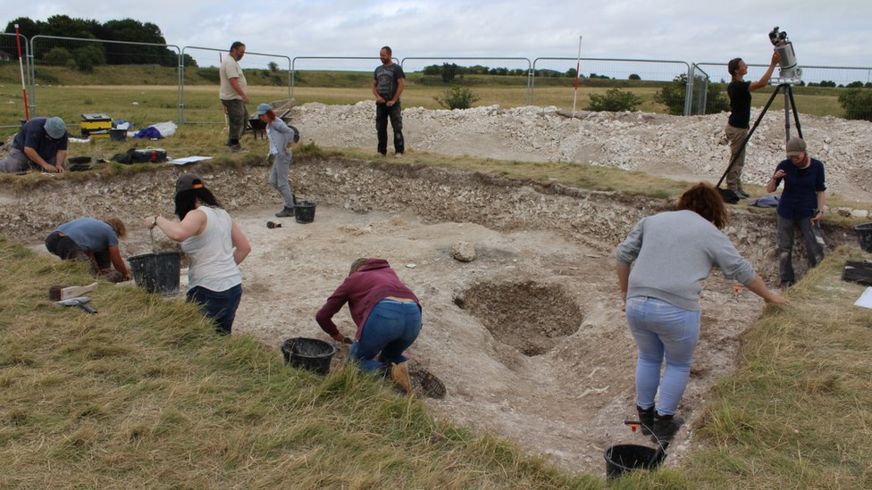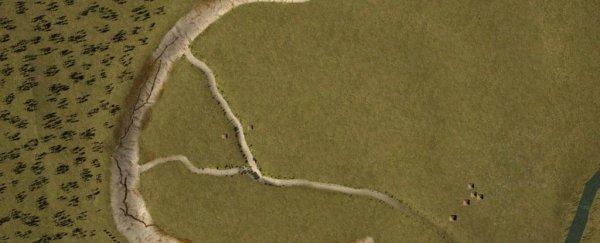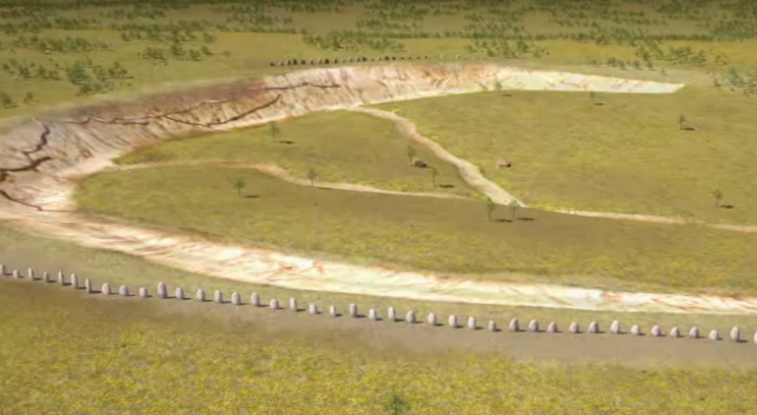Last year, archaeologists made headlines when they found evidence of a giant circular structure around five times the size of Stonehenge, located just 3.2 km (2 miles) northeast of the famous site.
At the time, researchers detected what they thought were 90 stone monoliths buried beneath a Neolithic settlement called Durrington Walls - but follow-up studies have now shown that the giant 'Superhenge' circle was actually made of timber. And, for some reason, it was taken down in a hurry.
The team is still filling in the blanks, but they think the site could be evidence of a tumultuous religious and political climate at the time of construction, around 4,500 years ago.
Superhenge was first discovered using geophysical surveying rather than actual excavation, and it showed what looked like huge, buried stone monoliths in a circular structure around 500-metres in diameter.
You can see a recreation of what that might have looked like below:
Now an actual excavation of the site has found no evidence at all of standing stones, but has revealed around 120 enormous pits that would have housed timber posts. Two of these have been excavated so far.
"The response from the radar was so good that the team thought they were dealing with a whole series of stones lying on their side, buried beneath the bank of this ancient earthwork," UK National Trust archaeologist Nick Snashall told the BBC.
"What we've discovered are that there are two enormous pits for timber posts. They have got ramps at the sides to lower posts into. … They did contain timbers which have been vertically lifted out and removed at some stage."
What's especially strange about the site is the fact that it seems this circle was never completed, because just before it was finished, someone appears to gave ripped out the timber poles and filled them in quickly with chalk rubble.
The circular henge bank, which you can see at the site today, seems to have been raised at that point to bury the structure they'd just started making - suggesting a new regime wanted to quite literally bury the past.
 Nick Snashall/National Trust
Nick Snashall/National Trust
The archaeologists also found a tool - a spade made out of a cow's shoulder blade - buried at the bottom of the post hole before it was filled.
"For some strange reason they took the timbers out and put up the enormous bank and ditch that we see today," said Snashall.
More research needs to be done, and a lot more of these timber pits need to be excavated before the researchers will be ready to submit their hypothesis for what what really went on here to a peer-reviewed journal. But it's possible that the site reflects Britain's transition from the Neolithic period to the Bronze Age.
"The new discoveries at Durrington Walls reveal the previously unsuspected complexity of events in the area during the period when Stonehenge's largest stones were being erected - and show just how politically and ideologically dynamic British society was at that particularly crucial stage in prehistory," Snashall told The Independent.

